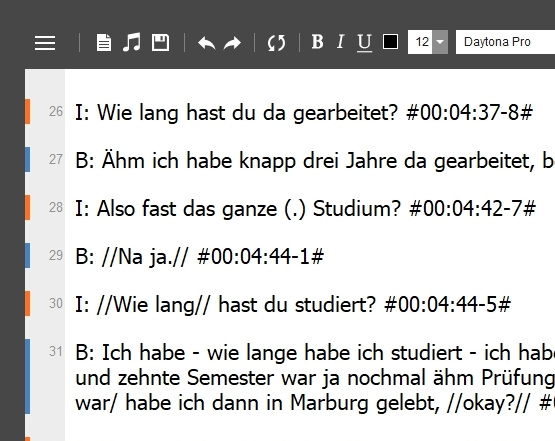

However, interpretivists have a different view of transcription.

Unlike positivists, they do not see transcripts as neutral representations of ‘reality’. For them, transcripts are theoretical constructions. Talk is situated (Edwards, 1991) – people don’t talk in isolation. What is said is influenced by the context – who is in the conversation, where the conversation takes place etc. In an interview, the interviewee will position themselves with a particular identity. Interpretivists argue that you cannot strip the context from a transcript. Instead, interpretivists rely on critical reflection. Their answer to why would you transcribe is to start a process of reviewing and reflecting on the data. Lapadat (2000) also argues that there is a third approach which she calls ‘the muddle in the middle’. Different researchers have dealt with the challenge of transcribing in different ways. They might adopt a standard of transcribing without reflection or make up transcribing conventions as they go along. Lapadat (2000) sees this as a risky strategy as she argues that ‘transcription decisions both reflect the researcher’s theory and constrains theorizing’. Transcription should be related to your purpose. You may be interested in just the content of an interviewee’s story. Or you may be interested in how she tells her story – her emotions, what she glosses over, what she is not saying. Or you may be interested in her underlying motivation for telling her story. You should consider your purpose and approach to analysis before transcribing. For your purpose, you may just need to turn the spoken words into text. There’s More To Transcripts Than Textīut textual information is just one component. Facial expressions and body movements give more information to form an interpretation. However, this information is stripped out of an audio file and hence lost. However, sounds such as laughter and sighs, the tone of the voice, length of pauses are picked up by the audio file and enriches the interpretation. These non-verbal aspects are critical for certain types of approaches to analysis – such as conversational and discourse analysis.Ĭonversational analysis has developed its own notation system to capture these non-verbal aspects as well as overlaps and interruptions in a conversation.


 0 kommentar(er)
0 kommentar(er)
